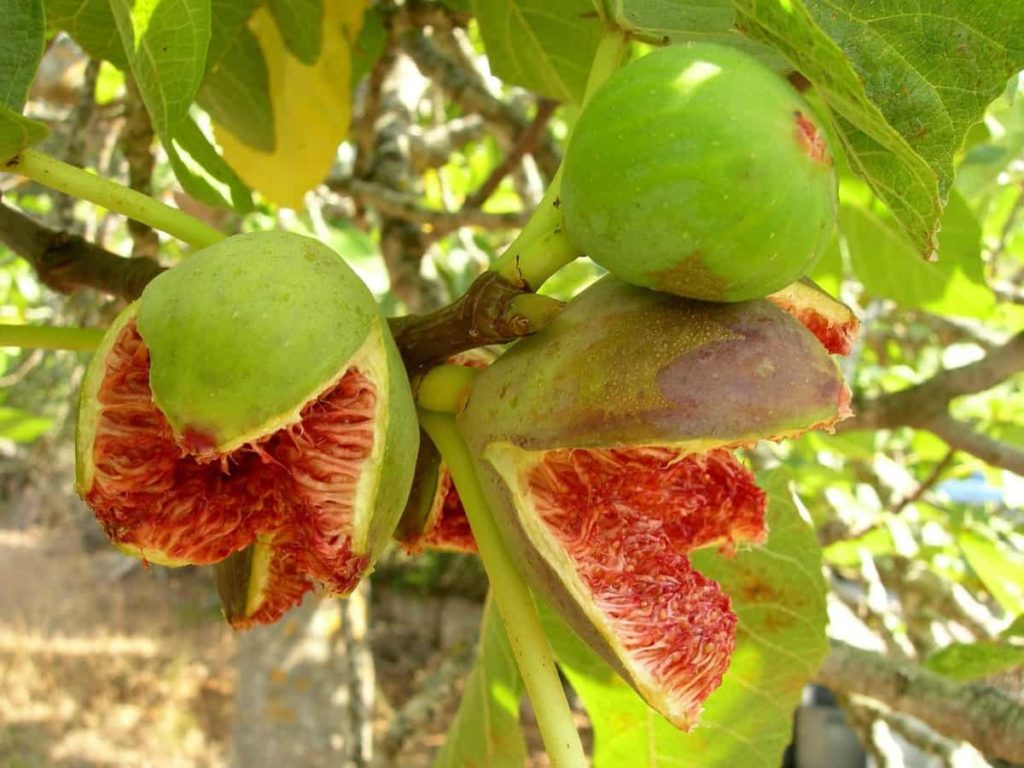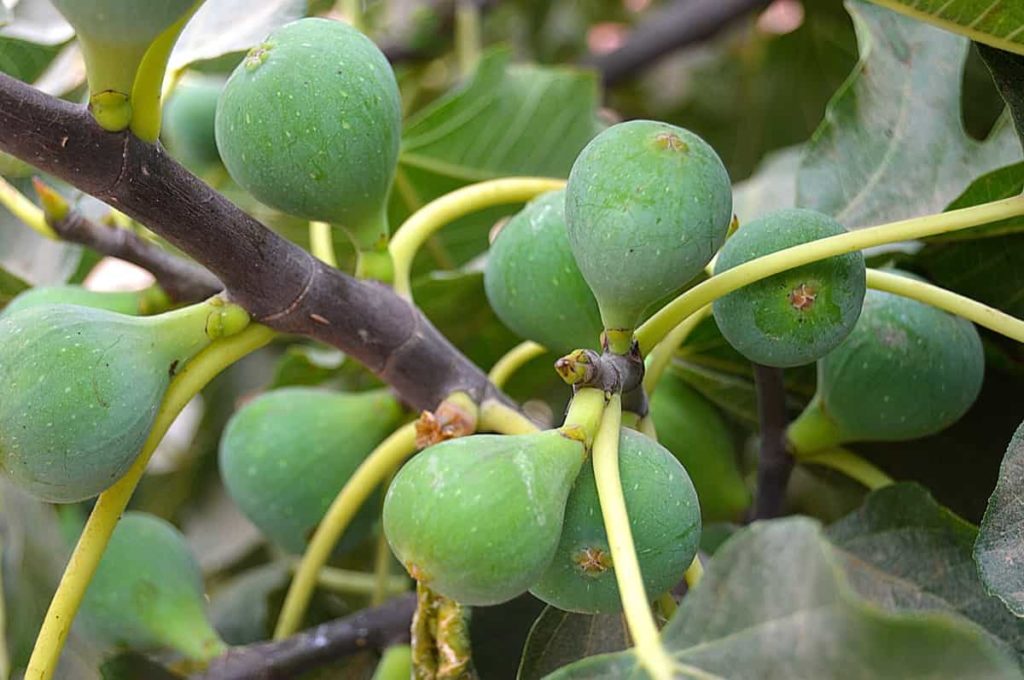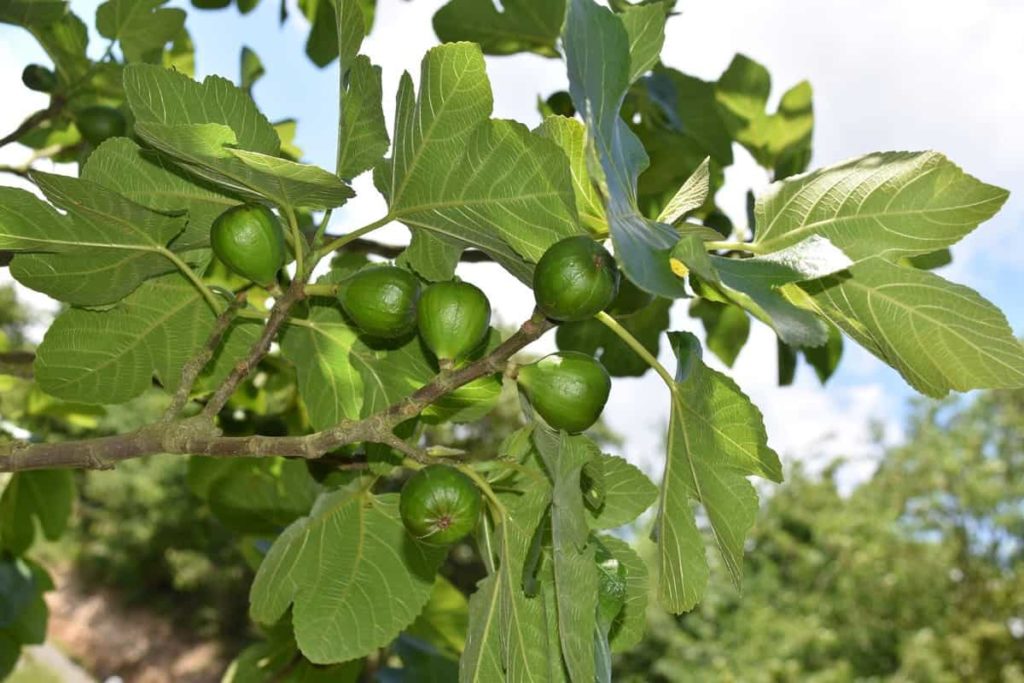Fig is a complete pleasure to grow in the home garden. They are beautiful, and they reward you with delicious treats. However, they need a little work and effort to secure your crop. The growing problems of Figs are not uncommon. Basics can cover quickly because if you correct the basics, many problems can be avoided when growing Figs.

The more beneficial it is, the more frustrating Figs are usually troubled by several fungal diseases and unknown bacteria or viruses. Knowing how to recognize Fig tree diseases can help you put a step ahead of the garden disaster. But not always everything happens easily, so many people look for answers to different problems while growing Figs. Let’s check 14 common Fig/Anjeer plant problems below.
14 common Fig/Anjeer plant problems
Small Figs
Some types of Figs are small, so make sure you know how big the Figs should be on your tree before you panic. While Figs don’t make much fussy about soil type or pH, they should have free-draining soil. If the water stays standing for a long time, the oxygen in the roots decreases, which can result in small fruits.
Solution – Make sure you plant your Fig tree in the full sun. A Fig tree in the shade will produce small fruits. If other plants have grown and are shadowing your Fig tree, consider cutting them back to allow sunlight to go in. Too much water can also cause small Figs; there cannot be enough water. Especially in hot and dry weather, consider mulching around the Fig tree. Their shallow roots and the Fig tree will suffer from dry weather and inadequate water. Drip irrigation can help tremendously.
Figs falling from trees
Water stress
Extended periods of drought often cause Fig trees to drop their fruits prematurely. In extreme cases, they cannot produce fruit. Additional signs of water stress include yellowing, curling leaves, and premature leaf drops.
Solution – If there has been no rain, the water matures Fig trees every week or two weeks.
Too much fertilizer
Excessive fertilizer, especially nitrogen-rich fertilizers, can cause fruits to ripen inappropriately. The fruits may not ripen and fall at the end of the season, looking stunted and premature.
Solution – Regular fertilization is not necessary for most Fig trees. Regular fertilizing should be reserved for most pot-containing Figs or Figs grown in sandy soil.
Wrong type
If Fig trees are not pollinated properly, they will produce immature fruits that will not ripen. If you have a Fig tree that doesn’t produce ripe fruits permanently, you may not have a normal Fig tree.
Solution – You should find which cultivar suits your region.
In case you missed it: Best Fertilizer for Fig trees/Anjeer: Organic, Homemade, Liquid, Natural, NPK, Compost, How and When to Apply

Pests and diseases
Soil nematodes are microscopic pests that can cause symptoms such as wilting, yellow leaves, small fruits, and overall health decline.
Solution – It’s hard to eliminate nematodes, although you can reduce their numbers by watering the soil during summer and spreading a clear, plastic sheet in the area. The hot sun can help to broil pests through the plastic.
Fig fruits are not ripened
Stress is the main reason that Fig fruit will not ripen. Fig trees are extremely vulnerable to stress, causing them to slow down or even stop ripening their fruit. The most common stress is dehydration in high heat conditions. Fig trees have shallow root systems, and irrigation is extremely important. If the Fig tree does not get a proper water supply, it cannot become fruit or not.
Solution – When planting Fig trees, provide adequate distance to improve air circulation besides using good pruning methods to open up the canopy. Avoid watering from the top, but water at the base of stems. Remove the fallen, diseased leaves and dump them in waste to prevent further disease from spreading.
Fig fruit trees are not growing
Fig trees are popular choices for home gardens as they place very few demands on their growers. If the Fig tree is not growing, it can be caused by disease, pests, or poor cultural practices. These are the main reasons for the stalled growth of the Fig tree.
Diseases
- Botrytis limb blight – The only way to manage the botrytis limb blight is to prune out the affected shoots just below the canker.
- Cold injury – Prune all the dead limbs, twigs, and leaves. Placing the mulch around the base of your tree can also help the soil maintain some heat, especially as winter approaches.
- Crown gall – If you suspect crown gall, clean all pruning tools with a solution of 10% bleach. It may also be better to uproot and burn affected trees to prevent further spread.
- Cotton root rot – The fungus that causes cotton root rot can survive in the soil for years, even below the surface. Unfortunately, most treatments, such as planting wheat or other cereal crops in an affected area, are only helpful for commercial farmers. If you suspect that the cotton root is in your Fig tree, do not plant another tree on the same site.
Pests
While a variety of insects enjoy feeding the fruits of Fig trees, they are unlikely to cause problems that prevent growth. However, a pest can cause significant problems for Fig growers.
Root-Knot Nematodes – Prevention is the only cure. Nematodes grow very fast, and no chemical nematicides are safe for use in the home garden.
Cultural issues
If none of the above looks like possible causes of your Fig tree’s stunted growth, it may be a problem with how it has been cultivated.
Cultivar selection
Find out which types of Figs are right for your region and growing conditions.
In case you missed it: Fig Gardening For Beginners – How To Start, FAQs

Pruning errors
Fig trees do not require much pruning, except for removing dead limbs or improving the air circulation between leaves. If you prune incorrectly, you can cause more problems than inadvertently solving them. When you prune, wait until after the fruit is ripe.
Inappropriate fertilization
It is natural to think that increasing the fertilizer you give to your tree will encourage growth. However, if you overfertilize your Figs, you will reduce your production and can stunt the growth of your tree. If the fruit of your tree is not growing or ripening properly, it may be a sign that you should fertilize less.
Fig tree loses its leaves during winter
Environmental conditions inside the house are often worse during the winter months. Low light levels, cold draft, and other environmental factors are stressful for plants. Stress can cause Figs and other houseplants to shed some leaves in winter. Good, consistent care should keep the leaves to a minimum during winter.
Solution – Fig trees prefer brightly little spaces near windows. Water the Fig tree until water starts flowing from under the pot. You should water the soil when the top 1 inch of soil dries before rewatering the Fig tree. Like most houseplants, Figs do not need to be fertilized during winter.
No fruit at all
This could be one of the most troubling issues. Your tree may look healthy with lots of leaves but no fruit sets.
Solution
It can be as simple as the age of the tree. You must give your Fig tree time to mature before producing fruit. Check out the cultivar you are growing to find out when to expect fruit. It can also be caused by too much nitrogen. Use balanced fertilizer when you feed your tree. Equal parts are somewhat ideal with nitrogen, phosphorus, and potassium.
Figs trees can also be very small due to standing water, so the tree cannot have to set any fruit. It is often the problem of Fig trees in containers that do not drain well or are planted in heavy soil. You can also give water often. Always check the soil before adding water. If it feels damp, like a well-wrung-out sponge, that’s ideal. Stick your finger in the soil. If it feels dry, it’s water time. If it feels wet, don’t add any moisture.
Curled Leaves on a Fig Tree
Fig tree leaves can suffer from pests, diseases, and lack of care, causing their leaves to curl and die.
Solution – Fig trees require full sunlight and plenty of heat. They are cool sensitive and need protection from the air. They also need loamy soil and often water. Due to lack of moisture, Fig leaves turn yellow, curl and drop off. A lack of moisture also causes leaf curl. Leaf curl is often treated with fungicides that target specific fungi on trees. Fungicide is applied in autumn after the damaged leaves fall.
In case you missed it: Fig Growing Tips, Techniques, Ideas, and Secrets

Fig tree leaves turning yellow
Your Fig tree leaves can be yellow for various reasons, such as inadequate water supply, nutrient deficiency, transplant shock, or pest attack. Lack of water or overwatering can be a stress for your plant. It gives leaves a bad shape and health. Leaves can also be affected by a lack of nitrogen in the soil. Insects like mealybugs can also damage their leaves.
Solution
Dealing With the Stress of Relocation
You should water the Fig tree a few hours before moving, and you should deal with it gently when moving your Fig plant. Ensure the leaves do not scratch against rough surfaces and the roots stay together.
Water problems
You can solve water problems while maintaining a consistent water schedule. You may suspect that the roots are filled with water. At this point, it would be a good idea to repot your Fig plant in well-drained soil.
Feeding the Fig tree
If the leaves turn yellow and the tree shows overall low growth, it is time to fertilize it. Pure nitrogen fertilizer may look tempting, but nitrogen excess can be harmful. It is better to buy a balanced fertilizer and then follow its guidelines.
Controlling pests
The best way to treat the mealybugs is to dip some cotton in ethanol and water. You can then use it to suppress the affected area. Buying pesticides will be the smartest idea if this household advice is not working.
In case you missed it: How to Grow Berries in USA: At Home in Pots, Containers, Indoors, and Tips

Leaves falling from the Fig tree
The common causes of Fig tree leaf drops are overwater, and underwater can lead to dropping Fig tree leaves.
Solution – Instead of pouring water on the schedule, water your Fig whenever the soil below the surface is dry to touch 1inch.
Diseases
Fig rust
It causes the Fig leaves to turn yellow-brown and fall in late summer or early fall. There are many rust-colored spots visible under the leaf. Although not usually fatal, perennial attacks from Fig rust can weaken your plant.
Solution – Neem oil can destroy the initial attack of rust, but removing the fallen debris will often prevent the Fig rust from taking root.
Leaf blight
This fungus attacks the leaves, although it produces spots that start in yellow and appear water-soaked. As the disease progresses, water-soaked areas expand and dry, and a papery surface behind. Thin holes can burst from infected leaves, or the entire leaf can be brown and die, with a mesh-like mat of fungi bodies clinging downwards.
Solution – Sanitation is the only control of removing these leaves as the infection appears and keeping the affected debris off the ground.
Pink blight
Pink blight often appears as a pink to the white, velvety coating on the internally affected, sick, or dead branches. The fungus can spread to healthy tissues from these dying tissues, destroying entire trees if untreated.
Solution – Cut the tissues surrounded by disease, destroy them immediately, thin up to a third of the small growth, and open it inside your Fig, creating enough space for air circulation.
Pests
Fig trees are also attacked by Beetles, earwigs, fruit flies, scales, nematodes, and spider mites. Small leaf spots, chewing leaves, and stunted growth can result from pest attacks.
Solution – A hard jet of water from the garden hose can drop many insects from the tree, but some, such as nematodes and fruit flies, may require more vigorous control with pesticides or predatory insects suitable for food crops.
In case you missed it: Types of Insect Pests in Your Garden: Control Methods, Solutions, and Treatment

Fig blister mites
Blisters on the surface of leaves cause leaves to russeted. Twigs can be stunted, and leaves can fall from trees.
Solution – Gardening oil or sulfur spray effectively controls blister mites and should be applied if mites were a problem last year. Chemical treatments should be applied before bloom.
Conclusion
Although Fig trees are much less exacting than other famous fruit trees, they are not free of difficulties. Diseases, pests, and inappropriate cultural methods can cause difficult problems for gardeners to overcome. Prevention is the best treatment, so before planting, check your soil, choose the right planting point, and find the species that is right for you.
- Gardening Techniques in Planting Vegetables
- Where to Place Indoor Plants in Your Home
- How to Grow Tomatoes Organically at Home: A Comprehensive Guide
- Organic Gardening on a Budget: Low-Cost Methods and Materials
- Gongura Seed Germination and Planting Methods
- Cabbage Seed Germination and Selection
- Broccoli Seed Germination and Selection
- Asparagus Seed Germination and Variety Selection
- Seasonal Flower Gardening: Best Practices for Spring, Summer, Fall, and Winter
- How to Grow Hibiscus from Flower
- Plantation Ideas for Home Decoration: A Beginners Guide
- Flower Garden Designs and Layouts for Beginners
- Planting and Spacing Techniques in Papaya: A Beginner’s Guide
- Growing Gold: Essential Techniques for Planting Pineapples
- How to Make Kalanchoe Plant Bushy: Home Remedies and Solutions
- 11 Reasons Why Your Gardenia is Not Blooming: Home Remedies and Solutions
- Eco Elegance: The Guide to Designing a Drought-Tolerant Landscape
- Gardening on a Slope: Strategies for Hillside Landscaping
- Nourish and Flourish: Top Organic Mulches for Thriving House Plants
- Everything You Want to Know about Indian Mogra Flower: Discover Uses and Growing
- Green Thumb Success: Expert Tips for Cultivating Greenhouse Pumpkins All Year Round
- Maximize Growth & Flavor: The Ultimate Guide to Companion Planting in Herb Gardens
- How to Control Rhododendron Problems Naturally: Home Remedies and Organic Ways to Fix Them
- Natural Magic: The Remarkable Benefits of Cinnamon for Plants
- Best Steps to Revive Dying Tulip with Natural and Organic Treatment
- 10 Reasons Why Your Angel Trumpet is Not Blooming: Remedies and Treatment
- How to Fix Periwinkle Leaf and Flower-Related Problems: Natural Remedies and Solutions
- How to Fix Zinnias Leaf and Flower Problems: Discover Natural and Home Remedies
- Organic Steps to Induce Lemon Tree Flowers: A Comprehensive Guide
- Bloom Booster: Crafting the Perfect Homemade Bougainvillea Fertilizer
- Optimizing Growth: A Guide to Applying NPK Fertilizer for Potted Plants
- 10 Best Homemade Fertilizers for Rubber Plant: DIY Recipes and Application Method
- How to Boost Female Pumpkin Flowers: Effective Steps for More Flowers and High Yields
- Transform Your Indoor Garden: Top Benefits of Pink Salt for Houseplants
- 10 Best Homemade Fertilizers for Peacock Plants (Calathea): Easy DIY Guide
- Unlock Blooms: 9 Reasons Why Your Potted Chrysanthemum is Not Blooming